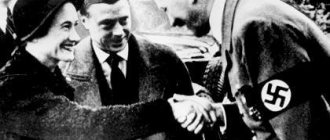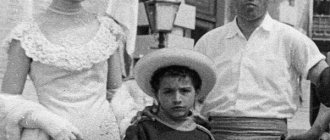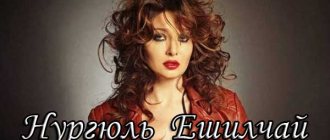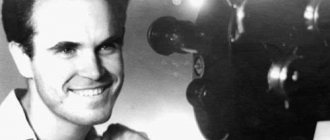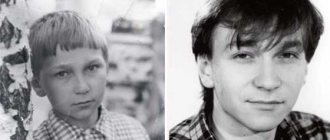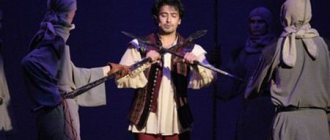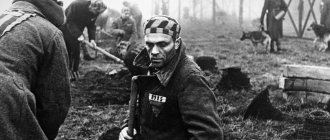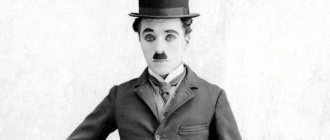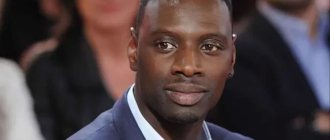“Don’t change this surname - He will glorify it” - About Edmond Keosayan
In 1937, his wife came to the last meeting with the arrested Garegin Kesayan with two sons, the youngest of whom was barely six months old. Garegin, realizing that his fate was sealed, said to his wife:
“You can get married again, but don’t change your last name for this little one, he will glorify her!” The father’s words turned out to be prophetic - 30 years later, director Edmond Keosayan was recognized by the whole country.
The childhood of the future author of the romantic trilogy about the Elusive Avengers began far from romantic. In the spring of 1937, Edmond's father was shot as a former officer in the tsarist army, and his family - his wife and two children - were exiled to Siberia, to the Altai Territory, to the village of Ascension.
They returned from exile only after the war, but did not dare to settle in Leninakan - the fear of the possibility of new persecution was still very strong, and the Kesayans moved to Yerevan. Kesayan - this is how Edmond’s last name originally sounded, the letter “o” appeared by mistake when receiving a passport, and remained that way.
At the age of 16, Edmond went to Moscow to enroll in VGIK. He was not accepted into the acting department “because of his Armenian accent,” although Edmond himself did not speak Armenian at all. Not wanting to return to Yerevan, Edmond entered the Moscow Economic Institute, where he studied for 4 years.
And for all 4 years in a row, in parallel with my studies, I tried to enter VGIK, but in vain. He entered only in 1958, but already as a director. In 1962, fourth-year student Keosayan’s course work “Staircase” received the Grand Prix at the Montecarlo International Film Festival. A year later, his second student work, the film “Three Hours on the Road,” was awarded the highest award at Cannes.
After prestigious international awards, the young director was given the green light, and he began working at the Yunost studio at Mosfilm. Prizes are prizes, but in order to make a statement, one needed a single film, but one that everyone would talk about. The Komsomol Central Committee proposed to make an adventure film based on the once popular “Little Red Devils” for the 50th anniversary of the revolution.
And Keosayan decided to make a Western, to give a worthy answer to the American “Magnificent Seven”. But how? There was no stunt school, you had to do everything for the first time, come up with your own tricks, and recruit specialists. Plus the choice of actors for the main roles - after all, they were still teenagers, and Vasya Vasiliev and Viktor Kosykh are not Yul Brynner and Ronald Reagan!
However, the film "The Elusive Avengers" was an application for romantic-adventure action. The risk was great, but Keosayan’s irrepressible energy, his recklessness and belief in the most impossible energized the entire film crew, and the result was not long in coming.
“The Elusive Avengers” created a sensation - the film was watched by more than 50 million people, and the boys watched the film many dozens of times. The dashing excitement of the characters, the spirit of youthful romance, a magnificent constellation of actors, amazing music, subtle humor - everything turned out the way Keosayan intended.
The most non-Soviet film on the most Soviet themes - this is how “The Elusive” turned out, the brightest example of the new genre “Eastern” - a western created in the east. The huge profits from the film's distribution pushed Goskino to order a sequel, which Keosayan did not even think about at first.
The second film, “New Adventures of the Elusive,” was even more successful than the first. But the chases, explosions and stunts, which were received with a bang by the viewer, were not at all easy... In one of the episodes, a car with the heroes had to drive through the glass windows of a pharmacy.
The Mosfilm safety technician forbade this stunt, arguing that the speed should not exceed twenty-five kilometers per hour. The fact is that, having passed through the pharmacy, the car had to turn sharply and stop next to a cliff about two hundred meters away.
And the Rolls-Royce has mechanical brakes... Keosayan needed a speed of sixty to seventy. He refused the effect of an accelerated frame - if you accelerate the car, then the glass falling will be accelerated, and the deception will become visible.
Keosayan went on an adventure. The intractable technician was sent a telegram from Moscow, allegedly his wife was flying to Simferopol - all so that he could leave the set in Yalta for a few hours.
And as soon as he left, they started filming. Several takes. With a real glass showcase! The actor’s mother Metelkina (Valerka), who was present, almost fainted. Only Keosayan was not worried.
And only years later he himself said - anything could have happened there, he could have killed the boy. By the way, during the filming, Keosayan had to urgently place Mikhail Metelkin in VGIK - in order to save him from being drafted into the army. Metelkin entered the Faculty of Economics, where film directors are trained.
I knew practically no mathematics. Instead of answering, he covered the paper with meaningless numbers. And during the exam, the mathematics teacher goes to the toilet. Keosayan follows him, goes into the next booth, climbs up and says from there: “Comrade, one of the heroes of the film “The Elusive Avengers” is admitted there, he doesn’t know a damn thing, give him an A.”
Caught in an extremely awkward position, the teacher begged: “I’ll do anything, just get out of here!” Then he entered the classroom, took Metelkin’s piece of paper, looked at it for a long time and said: “What an original solution. Great!"
After that, Keosayan took Metelkin to “Aragvi”, where they celebrated his admission... In general, Keosayan loved and respected the actors very much, and they reciprocated. Many famous actors gladly starred in his extras and episodes. Boris Sichkin was even offended by him because he was not in the third episode of The Elusive: in the second episode his hero, Buba Kastorsky, was killed.
But the hero Yefim Kopelyan was also killed! However, Kopelyan asked Keosayan’s wife, Laura Gevorkyan: “Laurochka, tell Edmond Gareginovich that I was wounded, was in the hospital, but still survived!” And Ataman Burnash “came to life” in the third episode.
The third film in the trilogy, “The Crown of the Russian Empire,” was literally forced to film Keosayan. But the actors had already grown up, and although the film was, as always, good and interesting, the energy turned out to be a little different... And, as usually happens in such cases, envious people and ill-wishers were easily found.
Unkind critical articles appeared in newspapers and magazines, even before the official release of the film on the wide screen. Keosayan was very worried, he regretted that he had succumbed to persuasion and agreed to film... The general situation was so difficult that he decided to leave for Armenia.
The Chairman of the State Cinema Committee of Armenia suggested: “Make an Armenian film - whatever you want, don’t even show the script.” This is how the incredibly kind, touching and ironic film “Men” appeared, which opened a new page in Keosayan’s work and revealed his talent from a completely unexpected side.
The painting was completed in early October. But according to the script, it was supposed to snow at the end of the film. And snow in Yerevan rarely falls before December, sometimes as early as January. There was no snow. And it might not have happened at all.
But Keosayan insisted - there must be snow in the finale! And I waited. He even went to Moscow, where he stayed in the hospital and took out a certificate of illness in order to delay the completion of the film. Everyone was waiting. And one early morning, looking out the window of a Yerevan hotel, we couldn’t believe our eyes - the whole city was white with snow.
At some frantic pace, Keosayan managed to raise the group “on alarm” and film the finale of the film - the snow lasted only a couple of hours, in the last frames you can see how it melts. He just really wanted it, and it snowed, especially for him. Then everyone joked - it’s good that he didn’t need a flood!
With Keosayan, anything was possible, such was his character, such energy. When his son, David Keosayan, was filming the documentary “Profession – Director,” he included in it his father’s working moments from filming. During the viewing, he was remarked: “Why this fast-motion filming of the director’s movements?”
In fact, it was not accelerated filming: Keosayan really moved so quickly. Frunzik Mkrtchyan even told him: “We need to make a friendly cartoon of you, Edik: from one mountain you shout “aye!”, and on the other you are already standing and listening to your own scream!”
He was a man of energy, giving his all to the end in everything. Even in his love for football. Because of football, he could quit filming and rush for 5 hours from Goris to Yerevan for Ararat matches, which he watched from the bench.
Nikita Simonyan told how during one of the matches, when the Yerevan team was already winning and the outcome of the match was a foregone conclusion, the ball hit our striker. And suddenly Edmond jumped up from the bench and, parallel to the player, rushed at full speed along the edge of the field to the laughter of the stands - the excitement captured him completely.
However, with his irrepressible energy, Keosayan took his work incredibly seriously and deeply. In preparation for filming Stars of Hope, I studied historical material. But since he could not read Armenian, he forced his wife to read to him “The History of Armenia” by Movses Khorenatsi - loudly, slowly, so that he had time to understand and digest.
During the filming process, he always and repeatedly reworked the script. When they started the second series of “The Elusive”, Goskino didn’t even read the script - “We know Keosayan, he’ll show one thing, but he’ll still film something completely different, so let him do what he wants!”
However, he knew all his scripts by heart and showed all the roles himself, playing in front of the actors. I never came to the set unprepared, I always knew what and how I would shoot. He was very strict - absolute silence during filming. But there are hundreds, or even thousands of people there.
In Garni, during the filming of “Star of Hope,” for the episode announcing Mkhitar as David Bek’s successor, a huge crowd of people was gathered on the steps and around the temple, on the slopes of the hill.
And suddenly Keosayan’s voice - mate, rewind, then: “Take the watch off your hand!!!!” In the Middle Ages there were no wristwatches... How he saw this watch at such a distance, in the crowd, is beyond comprehension.
Many directors have their own “trademark” tricks - Ryazanov will definitely film himself in an episode, in Danelia’s films no, no, and the song “Soap Marusenka’s White Legs” will flash...
Keosayan loved to feature his relatives and friends in his films. In the film “Men,” for example, he starred his 80-year-old mother. He actually created “The Elusive Ones” for his first-born, David, and filmed him in several episodes.
But he didn’t give his wife, actress Laura Gevorkian, roles for a very long time, although everyone advised him to do so: “I’m just a beginning director, what will they think of me if I start filming my wife!” In "The Elusive" the wife only got roles in the crowd.
Laura appeared in the film “Men” completely by accident. Dzhigarkhanyan flew to the shooting for just one day, and the actress chosen for this role was absent. And Laura, with a temperature of 38, was pulled out of the hotel and brought to the set.
She felt bad, all the time she thought: “What kind of nonsense am I playing, what kind of nonsense? This isn’t funny at all...” But in the end, it was this episode – village relatives visiting the dentist’s family – that the audience especially loved. In general, the theme of relatives, family, was special to him.
He knew nothing about his loved ones because his mother was afraid to tell anything about his father. In Leninakan, during the filming of the film “Ascension,” a man approached Keosayan on the set and, introducing himself as his second cousin, invited him to visit. He showed Edmond the Kesayan family tree.
This was an educational family - they opened schools, there were many teachers among them, and Edmond’s uncle was the governor of Kars. It turned out that many Kesayans today live abroad, in America, in France. Edmond was very inspired and asked to make a copy of the tree. And in December the Spitak earthquake occurred...
The main thing that distinguishes all his films is kindness. Even the negative heroes of “The Elusive” - the White Guards, bandits and crooks - looked nice and became favorites of the audience. In the film “Star of Hope,” which tells about the liberation war of the Armenians in the Middle Ages, he tried to avoid unnecessary blood and cruelty.
Infinite inner kindness manifested itself even in his last painting, “The Ascension,” dedicated to his childhood years spent in Siberian exile. Relatives did not understand why he deliberately removed almost all the negativity from the film - 4 hours for preparations for those deported, a terrible night station, brutal guard dogs, carriages in which some of the exiles arrived at the place dead...
But it was 1988, it was already possible to shoot quite freely. But no, he dedicated the entire film to a Russian woman - Baba Nyura, who sheltered the deportees and helped them survive...
Keosayan's kindness and openness lived in him, despite many difficult problems. For many years, Keosayan was restricted from traveling abroad. He was supposed to take the film “When September Comes” to the Cairo Film Festival (which later received the main prize - “Silver Nefertiti”).
He had already been prepared for the trip. But at the last moment they refused again. He got angry and invited the KGB officer in charge of these cases to his home, to whom he said: “I have grown-up children, and I cannot explain to them why I am not allowed to travel abroad. If you don’t explain the reason to me, then I will call the correspondents, give them an interview and leave the party.”
They began to beg him - calm down, we’ll find out everything. The “clarification” lasted another 2 long years, after which the father was finally rehabilitated, and Keosayan was allowed to travel abroad. He was summoned to the Lubyanka.
A huge office, at the end of a long table - a pile of folders. The official supervising culture said: “You can look at what’s in them.” And he left the office. The folders contained anonymous letters: “Keosayan loudly scolded the congress.”
And it happened like this - at the V Congress of Cinematographers, when Chukhrai was being bullied and booed, Keosayan, outraged by what was happening, left the hall in a rage, using several unprintable expressions. There were many sensitive ears and vigilant natures...
There were also anonymous letters from Armenia: “Taking advantage of the fact that in Russia they do not understand the Armenian language, Keosayan included a song of a nationalistic nature in the film...” - this is about the folk song about the fidayeen in the film “When September Comes”...
The personal tragedy of Edmond Keosayan was that in Russia he did not become a Russian director, and in Armenia - an Armenian one. He remained a stranger among his own, without becoming one among strangers. In the last years of his life, Keosayan really wanted to return forever to Armenia, which he loved very much.
I dreamed of making a film about the national hero Andranik. And also a film about Yerevan, about his generation, with the working title “City Guys.”
It was supposed to be a film about the children with whom he grew up - in the vicinity of the Moscow cinema, about his friend Dneprik (Dno), about a captured car brought from Berlin, in which they drove down Abovyan Street, braking with an ordinary crowbar - at the car there were no brakes.
I didn’t have time... But Edmond Keosayan managed to do something else - he gave us the kindness of his soul and the cheerful energy of his heart, which is still working for us at a speed of 24 frames per second.
Eduard Ayanyan | Photo from the personal archive of Tina Keosayan
Keosayan Tigran Edmondovich
Russian film director. Actor. Screenwriter. Video maker. TV presenter.
Tigran Keosayan was born on January 4, 1966 in Moscow. The boy grew up in a family of Moscow Armenians and creative people who devoted their entire lives to the art of cinema. His father Edmond Keosayan was a famous director who directed the cult “The Elusive Avengers.” Mother Laura Gevorkyan, Honored Artist of Armenia. It is not surprising that Tigran spent his entire childhood on the set. At the age of four, the young artist first showed his talents in his father’s film “The Crown of the Russian Empire, or The Elusive Ones Again.”
In 1983, after graduating from high school, the young man got a job at Mosfilm, where he performed a variety of duties. Dreaming of continuing the family dynasty, in 1984 Tigran Keosayan entered the directing department of the All-Russian State Institute of Cinematography named after Sergei Gerasimov and began studying in the workshop of Igor Talankin. However, some time later he left his studies and went to serve in the army. Having repaid his due debt to his homeland, Tigran returned to the institute to take Yuri Ozerov’s course.
While studying at VGIK, Tigran Keosayan directed his first film: the eighteen-minute drama “Sunny Beach,” which tells the story of a soldier who, unable to withstand the bullying of his “grandfathers,” goes on the run. This film starred his university friend Fyodor Bondarchuk, in whom Tigran played in the same short film “A Summer Morning’s Dream.”
In 1991, Keosayan made his debut in a full-fledged role in the comedy “Joker” by Yuri Kuzmenko. A year later, Tigran Keosayan directed his first full-length feature film, “Katka and Shiz.” And in 1996, his comedy mini-series “Funny Things, Family Matters” was released about four generations of one family, which is forced to adapt to new living conditions and decides to found a “family business” by setting up a laundry in the house.
The comedy “Poor Sasha” with Alexander Zbruev in the title role brought real fame to the young director. The light film told the story of an unlucky security thief Volodya Berezkin, who helps the girl Sasha rob her mother’s bank so that her mother will return home for the New Year. The film was awarded the TEFI Award as “Best Film of 1998”, and Zbruev received a prize in the “Best Actor” category at Kinotavr-98.
The director's subsequent works also enjoyed considerable success. In 1999, Tigran filmed the melodrama “The President and His Granddaughter,” which was awarded a special jury prize at the Kinotavr-2001 festival. Soon the lyrical comedy “Silver Lily of the Valley” appeared, telling about the vicissitudes of show business. This film was awarded a prize at the Window to Europe 2001 festival. A few years later, a sequel appeared on television screens - “Silver Lily of the Valley-2”, but as a television series.
The series about the Chechen war “A Man’s Work”, where the main roles were played by Fyodor Bondarchuk, Alena Khmelnitskaya, Sergei Veksler, Nikolai Chindyaykin, was also a great directorial success. In 2003, viewers were finally able to see Keosayan’s next acting work, who played cameraman Nikita Bakradze in Vsevolod Plotkin’s television series “Main Roles.” In the 2000s, other films by the director were released. The most famous films were: “The Hare over the Abyss”, “Mirage”, as well as the TV series: “Yalta-45”, “Three Comrades”.
In 2000, Tigran Keosayan made his debut as a theater director, staging the play “New” on the stage of the Taganka Theater. Three years later he became the director and co-producer of the musical “12 Chairs”.
Tigran, together with Fyodor Bondarchuk, began filming videos and commercials. At that time, this area of cinema was not very well known or popular, so young directors easily occupied a vacant niche and achieved considerable success.
Tigran Keosayan’s career was also successful on television. Since March 2007, he has become the host of the author’s talk show “Evening with Tigran Keosayan” on REN-TV. The program became so popular that after its closure in 2009, the director decided to make a sequel, “Hot Evening with Tigran Keosayan.” The show changed channels and changed format. Guests with diametrically opposed opinions on the topic under discussion were invited to the studio.
From 2009 to 2010, the director hosted the program “You and Me” together with his wife, actress Alena Khmelnitskaya. As part of the show, Keosayan and Khmelnitskaya talked about the family life of famous Russian couples and invited them to their studio for interviews. In 2011, Tigran Keosayan became the host of the talk show “Stop Silence!”, where current topics of everyday life were discussed.
Tigran also often appears on television as a guest or judge. He worked on the projects “Minute of Fame”, “People’s Artist”, “Video Battles”, “Empire of Illusions: The Safronov Brothers”. Since December 2009, Tigran Edmondovich has been the executive producer of the Perets channel, which was previously widely known under the DTV brand.
In 2021, under the leadership of Keosayan, the NTV channel began producing the program “International Sawmill”. This is an entertaining show with elements of political satire. Over time, the idea of dialogue formed the basis of the television program. The director himself calls being a TV presenter his hobby.
In 2021, the film director released the comedy “Crimean Bridge. Made with love!”, dedicated to the main construction project of the time: the construction of a bridge over the Kerch Strait. The main characters of the film were builders, archeology students, and television crews from America.
The works of Tigran Keosayan
The works of Tigran Keosayan
Directing works
Movies
1992 - Katka and Shiz 1996 - Funny things, family matters 1997 - Poor Sasha 1999 - The President and his granddaughter 1999 - Death Directory 2000 - Silver Lily of the Valley 2001 - A man's work 2002 - A man's work 2 2004 - Silver Lily of the Valley 2 2006 - Hare over the Abyss 2008 — Mirage 2011 — Yalta-45 2012 — Three Comrades 2013 — Sea. Mountains. Expanded clay 2021 - Actress 2021 - Crimean Bridge. Made with love!
Clips
“White Song” - Diana (Irina Nelson) “Fiddle Violin” (1997) (the original title of the song was “The Creak of the Wheel”; music - Igor Sarukhanov, lyricist - Alexander Novikov). “Look into the eyes” - Natalya Vetlitskaya “Neighbor” - Mikhail Shufutinsky “Cardboard wings of love” - group “Time Machine” “You know, mom” - Diana Gurtskaya “I will win you back” - Irina Allegrova
Other jobs
2000 - “New”, play 2003 - “12 chairs”, musical
Acting works
1971 - The Crown of the Russian Empire, or the Elusive Again - episode 1989 - Stalingrad - episode 1991 - Joker - Ashir 2000 - Silver Lily of the Valley - visitor in the club 2002 - Main roles 2004 - Silver Lily of the Valley 2 (episode "Daughter") - Kim 2005 - Mistress - Sergey 2006 - Heat - flower seller 2007 - Stuntmen - cameo 2010 - Happy together (series “Save our Dasha”) - director of the series “Love Love” 2013 - Sea. Mountains. Expanded clay - cameo 2021 - Actress - director
Participation in video clips
1995 - Tigran Keosayan starred in Sofia Rotaru’s video for the song “Night Moth”.
Participation in television projects
In 1998, together with Alena Khmelnitskaya, he took part in the television game “Through the Mouth of a Baby” on the NTV channel. In 2006, he took part in the 9th and 15th editions of the show “Thank God, you came!” on the STS TV channel. In October 2007, together with his wife Alena and daughter Alexandra, he participated as a player in the 4th edition of the sports show “Wall to Wall” on Channel One. In 2009, he was invited as a guest to the show “ProjectorParisHilton” on Channel One. In 2010, he was on the jury of “Video Battle”. In November 2010, together with his wife Alena Khmelnitskaya, he was invited as a player in the show “Ten Million” on the Rossiya TV channel. In 2014, the show “Empire of Illusions” was filmed. Brothers Safronov", Tigran Keosayan and Dmitry Shepelev became permanent members of the jury, the premiere took place on February 21, 2015 on the STS TV channel. In 2021, he is a member of the jury of the fourth season of the show “One to One!” on the TV channel "Russia-1". In December 2021, the New Year’s edition of the “Own Game” program was shown on the NTV channel, in which Keosayan took part as the channel’s host and won, beating Sergei Malozemov (host of the “Miracle of Technology” and “Food Living and Dead” programs) and John Warren (host of Let's Go, Let's Eat!).
Family of Tigran Keosayan
Family of Tigran Keosayan
Father - Edmond Gareginovich Keosayan (October 9, 1936 - April 21, 1994), Soviet film director, screenwriter, laureate of the Lenin Komsomol Prize (1968), Honored Artist of the RSFSR (1976). Mother - Laura Ashotovna Gevorkyan (Keosayan) (born January 28, 1939), Soviet and Armenian theater and film actress, Honored Artist of the Armenian SSR (1979). Brother - David Edmondovich Keosayan (born April 10, 1961), Russian film actor, film director, screenwriter and producer. Niece - Laura Davidovna Keosayan (born February 8, 1982), Russian theater and film actress.
First wife (from 1993 to 2014) - Alena Aleksandrovna Khmelnitskaya (born January 12, 1971), Russian theater and film actress, TV presenter. We got married in 1993. In a marriage that lasted twenty-one years, two daughters were born. The couple officially divorced in 2014. Daughter - Alexandra (born 1994). Daughter - Ksenia (born July 7, 2010).
The second wife is Margarita Simonovna Simonyan (born April 6, 1980), Russian journalist, editor-in-chief of the RT television channel and Rossiya Segodnya MIA. The couple has two children. Daughter - Maryana (born August 12, 2013). Son - Bagrat (born September 27, 2014).
04.01.2019
LiveInternetLiveInternet
Armenian Soviet director, screenwriter and actor Honored Artist of the RSFSR (1976) Honored Artist of the Armenian SSR (1976) Honored Artist of the Georgian SSR (1980) Winner of the main prize of the International Film Festival in Monte Carlo (1962, for the film “Staircase”) Prize winner IFF in Cannes (1963, for the film “Three Hours of Travel”) Prize winner at the IFF in Cairo (1975, for the film “When September Comes”) The film “When September Comes” was recognized by the British Academy of Film as “Best Film of 1975”
Edmond Keosayan was born on October 9, 1936 in Leninakan (today Gyumri). Kesayan is what Edmond’s last name originally sounded like. The extra "o" appeared later by mistake when Edmond received his passport.
In 1915, the Kesayans were forced to leave for Siberia. Where Edmond's father was later repressed and shot in the spring of 1937 as a former officer of the tsarist army. Shortly before his death, during a meeting with his wife, Garegin Kesayan asked his wife not to change the surname of her youngest son Edmond, even if she got married again. And 30 years later, the name of Edmond, who grew up in exile in the Altai Territory in the village of Ascension, was known throughout the USSR. Later, Edmond filmed his last autobiographical film, “The Ascension,” about this village, where the Kesayan family was sheltered by a Russian woman, Baba Nyura. And whom he considered a second mother after she let their family live with her, thereby saving them from starvation, despite the fact that she herself had three children.
After the war, Edmond and his family returned from exile, but the Kesayan family did not settle in Leninakan, out of fear of new persecution, but moved to Yerevan. After graduating from the school for working youth, Edmond Keosayan at the age of 16 went to Moscow, where he tried to enter the VGIK acting department, and where he was not accepted, allegedly because of his Armenian accent, although Edmond himself practically did not speak Armenian. In order not to leave Moscow, Edmond entered the Moscow Institute of Economics, and during the 4 years he studied there, he tried to enter VGIK, but in vain. Despite this, his friends invited him to play the main role in the film “When Friends Are Nearby,” and in 1956 he entered the acting department of the Yerevan Theater Institute. At the same time, Edmond worked as an entertainer in the State Variety Orchestra of Armenia under the direction of Konstantin Orbelyan. However, soon the stubborn Edmond returned to Moscow, where he entered VGIK, now for the directing course of Efim Dzigan, which he graduated in 1964, and continued to work as a full-time director at Mosfilm.
Edmond's talent as a director was revealed during his studies - in 1962, his course work “The Staircase” received the Golden Nymph Grand Prix at the Monte Carlo International Film Festival. A year later, the Eurovision Grand Prix and his second student work entitled “Three Hours of Road” were awarded in Cannes. It was after receiving prestigious international awards that the young director was invited to work at the Yunost studio at Mosfilm, and soon the Komsomol Central Committee offered him to make an adventure film for the 50th anniversary of the revolution based on Pavel Blyakhin’s story “The Little Red Devils.” But this proposal had its own backstory.
In the 1930s, the Soviet government loved to watch American westerns, and Stalin approved the creation of domestic adventure films, but the war began, and the country needed patriotic films. But in 1962, after the release of the film “The Magnificent Seven” in Soviet theaters and its overwhelming success, Khrushchev, just like Stalin once, decided that the USSR also needed to start making good adventure and partisan films.
To fulfill the wishes of the Secretary General, the Komsomol Central Committee chose Pavel Blyakhin’s story “The Little Red Devils,” which had previously been filmed in the USSR in 1923 by director Ivan Perestiani, the plot of which was quite suitable for an adventure film. Edmond Keosayan later recalled: “After the comedy “The Cook,” he turned to a completely different genre for himself - this is how “The Elusive Avengers” was born. The idea and theme of the film were suggested to us by the Komsomol Central Committee. The picture was born in a creative, truly youthful atmosphere. All of us who stood at the origins of the film, Komsomol workers and filmmakers, argued until we were hoarse.” In the story, brave teenagers, left orphans due to the fault of the White Guards, made their way into Budyonny’s army, and along the way they constantly violated the plans of Father Makhno’s troops. In Blyakhin's work there were three main characters - Mishka, his sister Dunka and the Chinese. The director of the film could initially have been Alexander Mitta, but for some reason this did not happen, and the shooting of the film was entrusted to Edmond Keosayan, who by that time had managed to shoot the film “Where are you now, Maxim?” and completed work on the film “The Cook” with Svetlana Svetlichnaya and Vladimir Vysotsky in the leading roles.
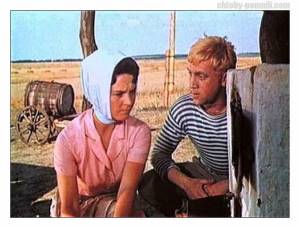
Initially, the script for the future adventure story of the “red devils” was called “The Sign of Four.” In Perestiani’s film, just like in Blyakhin’s story, there were three young fighters. But Keosayan, together with screenwriter Sergei Ermolinsky, made a huge number of changes to the original literary material. Blyakhinsky Mishka became Danka, his sister Dunka became Ksanka, and the Chinese man in the story, who is also the black man in Perestiani’s film, turned into a gypsy due to difficult diplomatic relations with China. To the three main characters, Keosayan and Ermolinsky added high school student Valerka, who often adjusted his glasses on the bridge of his nose and symbolized the intelligentsia who had joined the proletariat. In fact, Edmond set himself the task of filming a dynamic adventure fairy tale for his six-year-old son David, and in the course of implementing this titanic task at that time, the director had to come up with the stunts himself and find suitable specialists with whose help they could be brought to life on the screen. Keosayan came up with not only stunts on the set, but also musical numbers, and even wrote the lyrics himself. So, for example, he himself wrote the lyrics to the song of the blond Jezi on the bedside table at night. But the biggest difficulty in the film was that the main roles were to be played by teenagers. It was clear who would play the main character Danka even before the script was written. Vitya Kosykh, the son of actor Ivan Kosykh, has already managed to star in several films, and his hero Kostya Inochkin was remembered and loved by Soviet viewers in the film “Welcome, or No Entry to Outsiders.” Therefore, the image of Danka was created by the director and screenwriter especially for this young actor. The situation was more complicated with other candidates for the roles of the “elusive”. Valery Nosik was originally cast for the role of high school student Valerka, but he seemed too old to Keosayan. Then Victor Kosykh recommended that Edmond try for the role of his friend Misha Metelkin, with whom he starred in the film “Trains Go Past the Windows,” but he was not suitable due to his short stature. But since Misha really wanted to get this role, he began to eat carrots and sour cream in huge quantities, and to the great surprise of those around him, he grew seven centimeters in three months and was accepted into the film group. By the way, it was these young artists who helped Keosayan come up with the title of the film. It was Kosykh and Metelkin, who combined two options - “The Elusive from Gulyai-Polye” and “The Avengers from Gulyai-Polye”, who proposed the title of the film, which became the final one - “The Elusive Avengers”.
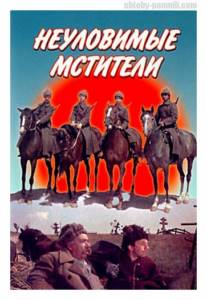
To find Gypsy Yashka, the filmmakers had to look at more than eight thousand children across the country, and only after that Edmond Keosayan turned his attention to Vasya Vasilyev from the Vladimir region, where the boy lived with thirteen brothers and sisters. Vasya was born and lived in a real gypsy camp, he was very talented, he sang, danced and knew how to stay in the saddle from the cradle. In addition, he studied well, despite the fact that he had to start working at the age of 12.

For the role of Ksanka, an actress with good athletic training, similar to a boy, was needed, and Valya Kurdyukova at that time was a candidate for master of sports in artistic gymnastics, and preferred boyish games, which predetermined her approval by Keosayan for the role in the film. Moreover, initially Keosayan wanted the audience to consider Ksanka a boy, and then, while swimming in the river, this deception should have been revealed. But after some reflection, Edmond decided that it was unlikely that a teenage revolutionary striptease would appeal to the ideological authorities.
Keosayan made the most serious demands on the actors' sports training, since they planned more than forty complex stunts in the film, which the actors had to perform themselves. For three months, the young actors were intensively taught horse riding, sambo, auto driving, billiards, swimming and balancing act. But even despite this, there were some injuries, cuts, bruises and abrasions during filming. Once, Viktor Kosykh almost died while filming a scene of rescuing children, stopping a cart with racing horses. In another episode, a car with heroes was supposed to drive through the glass windows of a pharmacy, but a safety technician from Mosfilm forbade this stunt, claiming that the speed should not exceed twenty-five kilometers per hour, while Keosayan needed to the car drove through the pharmacy at a higher speed. And then Keosayan made sure that the intractable technician was sent a telegram from Moscow, informing him that his wife was flying to Simferopol. The technician left the set in Yalta for several hours, and Keosayan filmed several takes in his absence, during which Metelkin and Vasiliev suffered many scars and cuts. Much later, the director admitted that anything could have happened to the actors at that moment. Also on the set of “The Elusive”, Vasya Vasiliev jumped into the water from a 25-meter height, which was an extremely dangerous stunt. And Valya Kurdyukova, who did not want to lag behind the boys and did a lot of diving, got sick in her ears. And she had to go to the hospital.
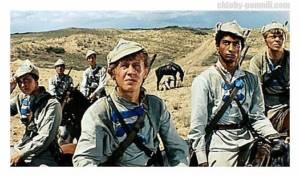
There were also funny episodes. For example, the scene in which Danka chased Lyuty, jumping across the roofs and jumping down onto his horse, had to be filmed many times due to the fact that the horses did not want to stand still while waiting for their riders to fall on their backs. Therefore, Kosykh constantly fell on the ground, then on the neck of the actor Treshchalov, who played Lyuty. Treshchalov, not devoid of humor, even rode in a circle with Kosykh around his neck, shouting “yoke-go!” But after several unsuccessful takes, the wall near which the horses were supposed to stand was smeared with sugar syrup - and the horses froze in the right place for a long time. In addition, due to the fact that there were not enough understudies for the races, the guys managed to work as White Guards. They changed into different costumes and rode along with other bandits. And then, while watching the film, they had a lot of fun watching their heroes fight against themselves. And once, during filming, Keosayan had to urgently arrange for Mikhail Metelkin to work at VGIK so that the actor would avoid being drafted into the army. But Metelkin applied to the Faculty of Economics, although he knew practically no mathematics, and instead of answering the exam, he was forced to fill the sheet with meaningless numbers. Seizing the moment when the mathematics teacher went to the toilet, Keosayan followed him, went into the next stall, climbed up and asked, watching the teacher: “Comrade, one of the heroes of the film “The Elusive Avengers” is admitted there, he doesn’t know anything, give him an A.” Taken by surprise, the teacher replied: “I’ll do anything, just get out of here!” — then he went into the classroom, took Metelkin’s piece of paper, looked at it, and said: “What an original solution. Great!" After which Keosayan took Metelkin to “Aragvi”, and they celebrated his admission together.
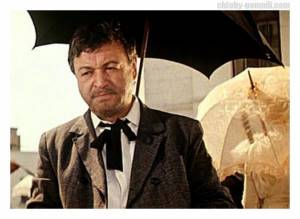
Keosayan very much loved and respected the work of the actors, and they reciprocated. Boris Sichkin, who danced from the age of four, who went through not only a gypsy camp, a hotel restaurant and dance ensembles, but also the Great Patriotic War, himself asked to be cast in the role of Buba Kastorsky.
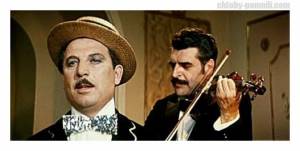
Armen Dzhigarkhanyan played the main enemy of the “elusive” instead of Lyuty, who was killed in the first episode, played by Vladimir Treshchalov.
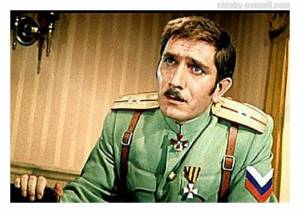
In subsequent episodes of the film, Keosayan himself played, portraying a spy in a boater, and his wife Laura played.
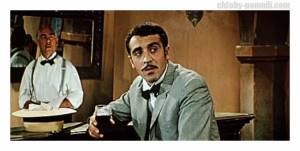
This entire cheerful Armenian diaspora, supplemented by Jews Efim Kopelyan, Boris Sichkin and Savely Kramarov, led the film to absolute and final success.
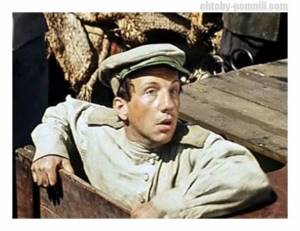
To consolidate what was achieved, songs based on the poems of Robert Rozhdestvensky, music by Boris Mokrousov and Ian Frenkel, as well as the quite fabulous glorious commander Budyonny performed by Lev Sverdlin, who was later replaced by the abstract red chief performed by Ivan Pereverzev, were called upon. As additional information, it can be noted that Boris Sichkin was terribly offended later by Keosayan for not letting him play in the third episode of “The Elusives” after his hero was killed in the second episode. But exactly the same reason did not interfere with Yefim Kopelyan, who asked Keosayan’s wife, Laura Gevorkyan: “Laurochka, tell Edmond Gareginovich that I was wounded, was in the hospital, but still survived!” And Ataman Burnash in the third episode really came to life.
Keosayan’s irrepressible energy, his recklessness and belief in the impossible energized not only the actors, but also the entire crew. The work of a magnificent constellation of actors, amazing music and subtle humor - everything turned out exactly as Keosayan intended. The result was not long in coming - the film “The Elusive Avengers” made a splash at the Soviet box office, the film was watched by more than 50 million viewers, and many of them went to the cinema to see the film dozens of times. After the release of “The Elusive Avengers”, Keosayan said in an interview: “We shot the picture, first of all, for teenagers, for people at that age when many - not everyone - are overwhelmed by the thirst for romance, strong and sharp impressions, when the action does not follow. behind the thought, but on the contrary, rather caused by a strong emotion, the action gives rise to thought. Therefore, in our film there is a dynamic, rapidly developing action, where the main measure of a person’s value is his actions, where the heroes are assertive, active, courageous and fight for great goals. This is what great goals are the most important thing in an action-packed adventure film! Only in this case will a film work meet its ultimate goal – dropping seeds of courage, seeds of fearlessness, seeds of goodness into the soul of a young viewer.”
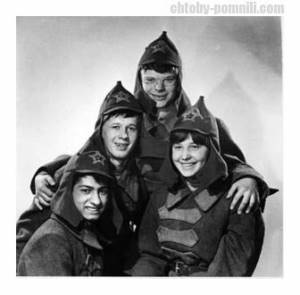
After completing the filming of “The Elusive Avengers,” Keosayan was going to shoot the film “Antarctica - a Distant Country” based on the script by Andrei Tarkovsky and Andron Mikhalky-Konchalovsky, but the huge profits from the film’s distribution pushed Goskino to order a sequel to “The Elusive Avengers,” and a second film, “New Adventures.” elusive” was even more successful than the first. Edmond Keosayan said in an interview: “When finishing the second series, we clearly understood that there would be a third. It was impossible to leave the heroes in the conditions of the civil war, where they acted spontaneously, fell into random vicissitudes, although they emerged victorious. It was necessary to show them consciously acting in peacetime conditions. The main thing for us was not new tricks, even the most grandiose and dashing ones, although there are also a lot of them in the new film. The main thing is that our boys have become adults, that in a fair struggle their characters have developed and matured. They became professional security officers, fighters in Dzerzhinsky's army. But, having said goodbye to the dashing time of adolescence, they did not lose, and, in our opinion, they will never lose their spiritual romance and thirst for achievement.” And although the film turned out to be interesting, after its release, critical articles appeared, reading which, Keosayan was very worried and decided to leave for Armenia.
- Why are you leaving? - Savely Kramarov asked him in surprise. – You will make new films! You will be inundated with offers!
“I showed that I can work, and not badly,” answered Keosayan, “after all, many colleagues considered me an incapable director or, at best, a failure.” I proved to them that I could make pictures no worse than they could. But I’m not going to prove this my whole life. Life is not all about work.
- Really? - Savely was surprised. — People got a lot of joy from your film!
“So, I, too, have earned the right to my joy,” Keosayan sighed, “I’ll go to my homeland, buy a house, live among my loving relatives, talk with them, spend evenings, sing folk songs.”
But Keosayan didn’t have to “sing songs” for long. The Chairman of the State Cinema Committee of Armenia immediately suggested to Keosayan: “Make an Armenian film - whatever you want, don’t even show the script.” And Keosayan made a kind, touching and ironic film “Men”, which opened a new page in the director’s work and revealed his talent to the audience from a completely unexpected side. In the same film, he starred his wife Laura Gevorkyan in a cameo role.
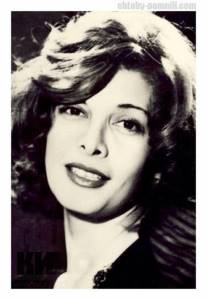
Armen Dzhigarkhanyan flew to the shooting for just one day, and the actress chosen for this role was absent. And Edmond brought Laura to the set, despite the fact that she was sick and had a temperature of 38 degrees. Despite the fact that at that moment Laura decided that she would have to play some nonsense, as a result, the episode with the village relatives visiting the dentist’s family became a cult in Armenian cinema. When the film was almost finished in early October, Keosayan had to film several episodes with snow, which does not fall in Yerevan until December or January. But Keosayan was determined - there had to be snow in the finals! And waited for suitable weather. And one early morning, he saw that the whole of Yerevan was covered with snow. At a frantic pace, Keosayan gathered the group and filmed the ending of the film, although the snow lasted only a couple of hours, and in the last frames of the film it was visible how it was melting. The crew later joked: “It’s a good thing he didn’t need the flood!”
Keosayan had amazing energy, and it seemed that he could control everything. When his son David Keosayan filmed the documentary “Profession – Director,” he included in it the working moments of filming his father’s films. During the viewing, he was remarked: “Why this accelerated filming of the director’s movements?” But in fact there was no accelerated filming: Keosayan really moved so quickly. Frunzik Mkrtchyan even told him: “We need to make a friendly cartoon of you, Edik: from one mountain you shout “aye!”, and on the other you are already standing and listening to your own cry!”
Edmond Keosayan loved football very much, and for his sake he could stop filming and come from Goris to Yerevan for the Ararat match to watch it from the bench. Nikita Simonyan told how during one of these matches, despite the fact that Ararat was winning, Edmond jumped up after the ball hit the striker and ran parallel to the player along the edge of the field because of the excitement that gripped him. But the director’s irrepressible character did not prevent him from taking his work seriously. Preparing for the filming of “Star of Hope,” he studied historical material, and not being able to read Armenian, he asked his wife to read aloud to him with expression and leisurely “The History of Armenia” by Movses Khorenatsi, so as to have time to understand the text. Later in this film, the director filmed his eighty-year-old mother.
During the filming process, Edmond Keosayan liked to rework the script many times. During the filming of the second series of “The Elusive Avengers”, Goskino did not even read the script for the film, citing the fact that Keosayan would show one thing, but still film something completely different. Nevertheless, the director knew the scripts by heart while working, played all the roles himself along with the actors and always knew what and how he would shoot. On the set, silence was important to Keosayan, despite any number of people on set. Once, during the filming of “Star of Hope”, in the episode where Mkhitar was announced as David Bek’s successor, a huge crowd gathered around the temple, and suddenly Keosayan’s terrible curses were heard - from a great distance he noticed that someone in the crowd flashed a wristwatch, which no one had in the Middle Ages.
The main feature that distinguished all of Keosayan’s films was kindness. Even the negative heroes in “The Elusive Avengers” - bandits and crooks - looked cute and became audience favorites. Keosayan said: “First of all, I am guided by the desire, regardless of the genre, to bring a personality to the screen. A courageous, noble, kind person, with a broad soul, a person whose fate will captivate or touch the viewer, will break through even the scab of indifference that no, no, but is inclined to appear on the soul of this or that young man. I am convinced: neither a rapidly developing plot, nor the most sophisticated editing, nor beautiful shooting, nor a good idea makes a film significant. Whatever the genre, the film, first of all, needs a hero - bright and attractive, affecting not only the mind, but above all the heart.”
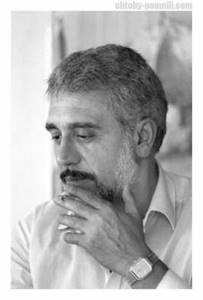
In the film “Star of Hope,” filmed in 1988, which told about the liberation war of the Armenians in the Middle Ages, Keosayan also tried to avoid showing unnecessary cruelty. In an interview, he said: “We have finished working on new films - again of a new genre. “Star of Hope” is a historical drama, a huge and multi-layered canvas. It is full of heroics, but heroics of an epic nature. This picture is about the history of the Armenian people, about the centuries-old tragedy that befell my people due to the aggressive policies of their neighbors.” Kindness also manifested itself in his last painting, “The Ascension,” dedicated to his childhood spent in Siberian exile. Relatives did not understand why he deliberately removed from the film 4 hours of preparation time for those deported, a terrible night station, brutal guard dogs, carriages in which some of the exiles died before reaching their destination. In addition, Keosayan dedicated the film to a Russian woman, Baba Nyura, who sheltered the deportees and helped them survive.
The topic of relatives has always been a special topic for Keosayan. He knew little about his loved ones because his mother was afraid to tell him anything about his father. And so he was very happy when one day in Leninakan, during the filming of the film “Ascension,” a man who introduced himself as his second cousin approached him on the set and invited him to visit. He showed Edmond the family tree of the Kesayans, and Edmond was pleased to find out that among his relatives there were many teachers, and Edmond’s uncle was the governor of Kars. It also turned out that many Kesayans live abroad - in America, in France. Edmond was very inspired by this circumstance, and asked to make a copy of the tree, although he himself had not traveled abroad for many years. So, for example, he was supposed to take the film “When September Comes” to the Cairo Film Festival, which later received the main prize - “Silver Nefertiti”, and his documents were already prepared for the trip, but at the last moment he was again denied permission to leave the country. He got angry and invited a KGB officer to his home, to whom he said: “I have grown-up children, but I cannot explain to them why I am not allowed to travel abroad. If you don’t explain the reason to me, then I will call the correspondents, give them an interview and leave the party.” The employee promised to find out everything, and after 2 years, Keosayan’s father was rehabilitated, and Keosayan was allowed to travel abroad. True, before this he was called to the Lubyanka and shown a pile of folders. The official in charge of culture said: “You can see what’s in them,” and left the office. The folders contained anonymous statements reporting that “Keosayan loudly scolded the congress.” And it was like this. At the V Congress of Cinematographers, at which Chukhrai was bullied and booed, Keosayan, outraged by what was happening, left the hall in a rage, using several unprintable expressions. Anonymous letters also came from Armenia: “Taking advantage of the fact that in Russia they do not understand the Armenian language, Keosayan included a nationalist song in the film...” - this was what was written about the folk song about the fidayeen in the film “When September Comes.”
In the last years of his life, Keosayan really wanted to return forever to Armenia, which he loved very much. He dreamed of making a film about the national hero Andranik and a film about Yerevan, about his generation with the working title “City Guys.” It was supposed to be a film about the people with whom he grew up in the vicinity of the Moscow cinema, about his friend Dneprik, about a captured car brought from Berlin, in which they drove along Abovyan Street, braking with an ordinary crowbar, since the car had no brakes .
But he didn’t have time... Edmond Keosayan was a passionate smoker. At first he preferred inexpensive cigarettes and cigarettes, and later switched to smoking a pipe, and never parted with it. When the director was diagnosed with a tumor in his throat, the doctors were powerless. Edmond Keosayan died of throat cancer on April 19, 1994 in Moscow.
Edmond Keosayan was buried at the Kuntsevo cemetery in Moscow.

Filmography:
“The Staircase” (1962), director (Keosayan’s first film, created at the VGIK training studio) “Three hours of travel” (1963), director “Where are you now” (1964), MAXIM? director of "The Cook" (1965), director ("collective farm melodrama", which opened the names of V. Vysotsky and S. Svetlichnaya to a wide audience) "The Elusive Avengers" (1966), director (the coolest Soviet action movie, the most famous film by Keosayan) “New Adventures of the Elusive” (1968), director of “The Crown of the Russian Empire or the Elusive Again” (1970), director of “Men” (1972), director, co-screenwriter of “The Gorge of Abandoned Tales” ( 1974), director, co-screenwriter of “When September Comes” (1975), director of “Star of Hope” (1978), director of “The Legend of the Buffoon” (1979), director (jointly with L. Asatryan), artistic director of “Somewhere an Oriole is Crying” (1982), director of “Ascension” (1988), director
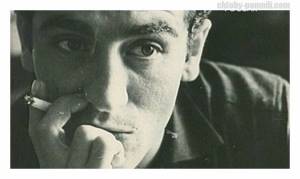
October 9, 1936 – April 19, 1994
Text prepared by Andrey Goncharov
chtoby-pomnili.com
